Showing 13–24 of 66 results
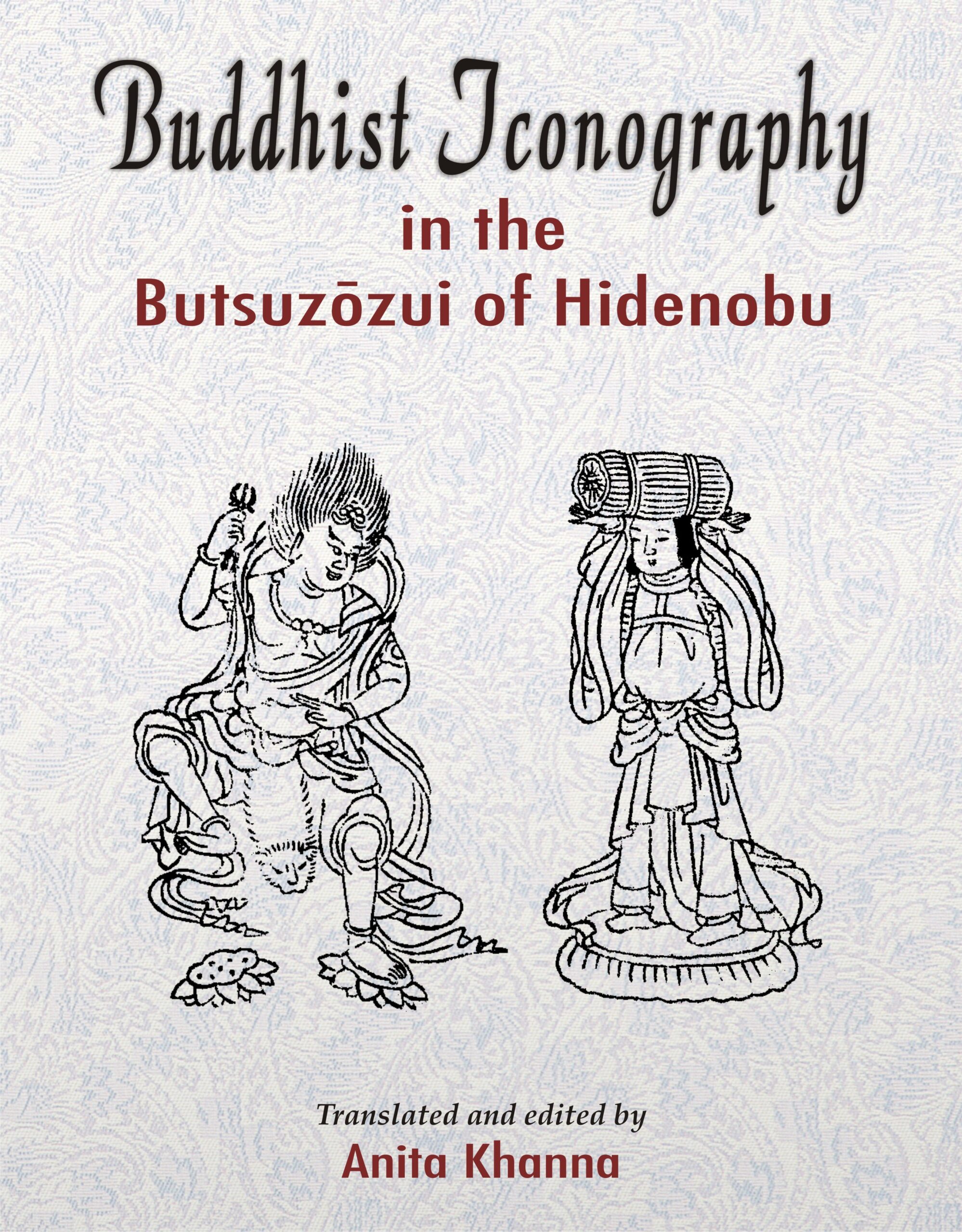
The book presents the Buddhist iconography as depicted in the Butsuzo-zui Buddhism adapted in Japan with the collections of icons divided into five parts. It introduces the amalgamation of Buddhist and the native Shinto deities, a unique feature of Japanese Buddhism.
The volume presents the Buddhist iconography of Japan as depicted in the Butsuzozui, a collection of iconographic sketches of various Buddhas that falls under the genre of Zuzo collections of iconic drawings in black and white. Inspired by the Chinese style of paintings called Paihuo or Hakubyo, the over 800 sketches presented here bear reference to the landmark work of this genre compiled in ce 1175 under the title of Besson Zakki and are arranged on the basis of the treatise of the Shingon sect of Buddhism. Butsuzozui presents Buddhism as it has been adapted in Japan, with the collections of Buddhist icons divided into five parts. It contains the list of sources, especially the scriptures. It deals with the Chinese icons of Fudaishi and his sons Þ the laughing Buddhas; sketches on the birth of the historical Buddha, his search, sambodhi and parinirvana; the nine categories of Amida and the classification of the Seven Buddhas of healing (Shichi Yakubutsu). It introduces the amalgamation of Buddhist and the native Shinto deities, a unique feature of Japanese Buddhism. The sections that follow expand the list of the protector gods associated with the Japanese beliefs and the different historical personalities associated with the various sects of Buddhism in Japan.
The volume will interest scholars of Buddhist religion and art.

The volume contains scholarly essays that make an in-depth study of Buddhist logical theory in the background of Buddhist epistemology. Two crucial philosophical concepts: trairåpya and apoha have also been discussed, besides the contributions of the leading Buddhist scholars like Diïnàga and Dharmakãrti.
The history of Buddhist logical and epistemological theories constitutes an interesting study for Buddhist religious scholars and philosophers.
This volume contains scholarly essays, presented at a seminar, that make an in-depth study of Buddhist logical theory in the background of Buddhist epistemology. Scholars from different parts of the world combine historical and philological scholarship with philosophical acumen and linguistic insight to examine the issues relating to problems of inductive logic and the problem of meaning and the universals. They also address the crucial question regarding the relevance of logical theory to Buddhism, especially to the philosophical soteriology such as Madhyamika. Using both Tibetan and Sanskrit texts to delve deep into the logical issues and philosophical questions, they focus attention on two crucial philosophical concepts: trairupya or the triple character of evidence, and apoha its meaning as exclusion. They examine the contributions of Buddhist scholars of yore in this regard, such as that of the Buddhist master Dinnaga and his general theory of inference, and in particular, his Hetucakradamaru, a study of propositions; Dharmakirti, particularly his theory of inference and definition of points of defeat; besides Shantarakshita and Ratnakirti.
The volume, offering original perspectives based on detailed study of ancient texts and their interpretations, will prove an informative source for scholars of Indology, particularly those involved in Buddhist religion and philosophy.
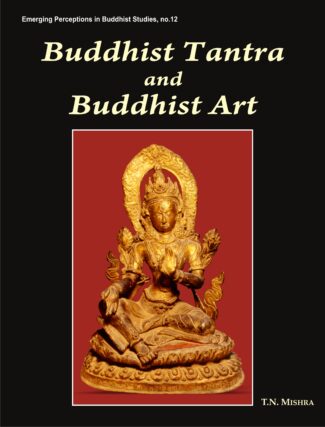
It deals with the development and fundamental aspects of Buddhist Tantrism and its impact on paintings and the sculptural art of India. It discusses concepts and schools of Tantrism citing Buddhist Tantric works.
In (perhaps) secret defiance of the rigid prescriptive codes of the Buddhist monastic order cropped up a new, esoteric cultic phenomenon. Which, later known as Buddhist tantra, not just compromised Shakyamunis ethical legacy, but came to be administered by a whole host of mudras, mandalas, kriyas, caryas and mysteriously ritualistic elements, even hedonistic practices. Dr. Mishras book attempts afresh to investigate when, why and how emerged this secrecy-ridden cult: now a spiritual tradition in its own right. The author, who has had long, personal interactions with some of the living tantriks, here enters the dark alleys of Buddhist tantra to look for its nucleus, its evolution, its culmination, and the causes of its disintegration. Focussing, further, on the shifting philosophical tenets of Buddhism: from Hinayana to Mahayana, Vajrayana, Kalacakrayana and, finally, Sahajayana, Dr. Mishra spells out quintessentially the world-view of Buddhist Tantra and its path to nirvana or sukhavati: the abode of bliss, together with a wide range of tàntric concepts that remain guhya (secret) to the uninitiated. Also showing how Buddhist art, almost from the beginning, has been compellingly influenced by tantric practices, the book exemplifies the manifestations of this influence in the iconographic representations of the Buddhist deities, illustrated manuscripts, thangkas, and even in the use of colours by the Buddhist artists.
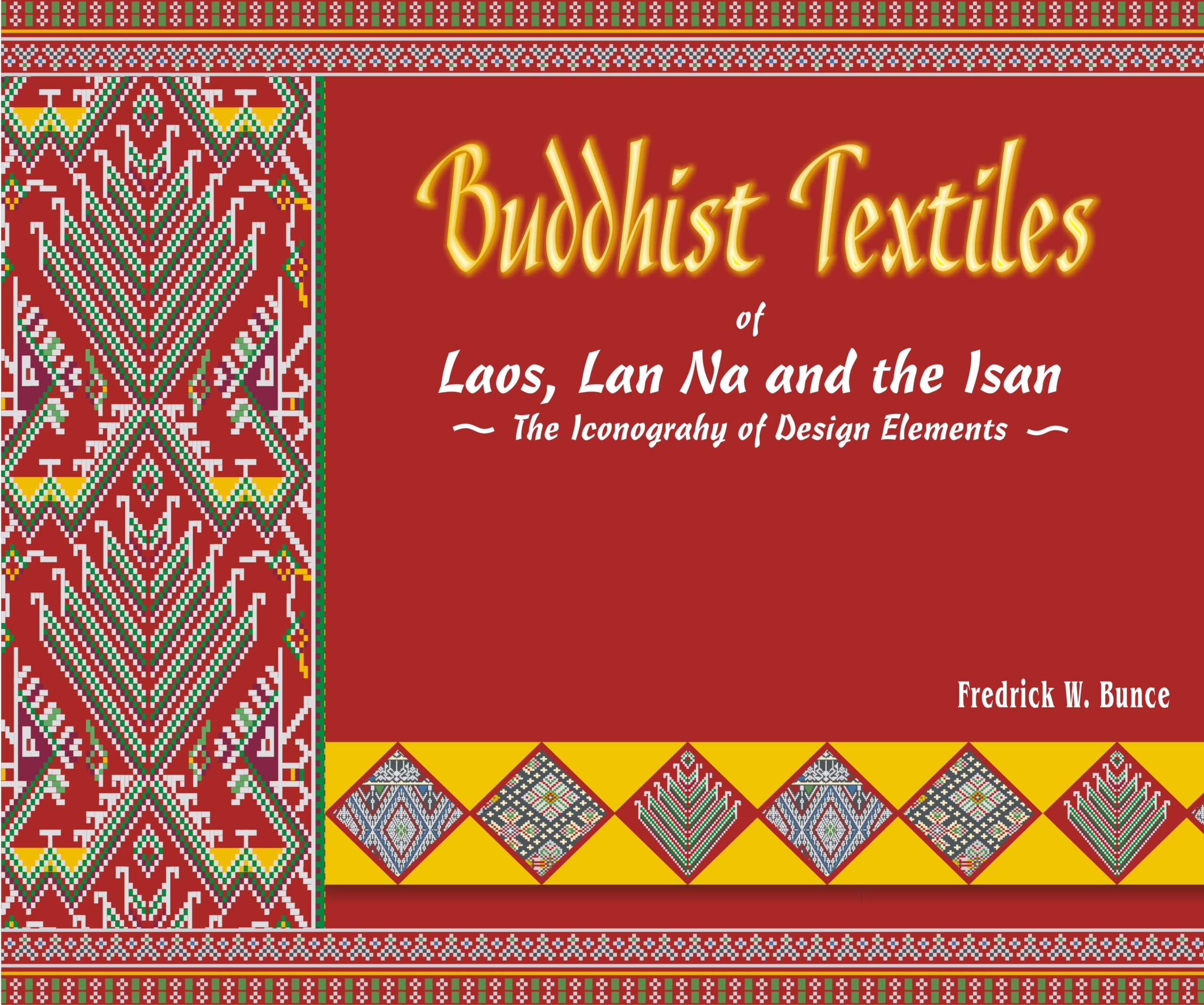
This book studies the iconography of the design elements typically employed by craftspersons of Tai textiles from the Laos, Lan Na and Isan areas. With numerous splendid illustrations of the designs, it deals with their art of weaving, various textile forms to be found in the region and the suitable and inherently powerful motifs woven.
Textiles from Laos, Lan Na and the Isan are prized for their artistic brilliance and aesthetic beauty. They speak volumes on a weaving tradition that has evolved through centuries and shaped the socio-cultural life of the people associated with it. This book studies the iconography of the design elements typically employed by craftspersons of textiles from these areas: it deals with their art of weaving, various textile forms to be found in the region and the suitable and inherently powerful motifs woven. With numerous splendid illustrations of the designs, it involves study of design elements on articles of daily use as well as those used for ceremonial purposes and the kind of forms and iconography depicted like ancestor figures, animal and plant forms, water creatures, objects used in ceremonies and geometric forms. Viewing Buddhism as the prime influence upon the objects though Hinduism is also an important referent, it explores the symbols the design elements involve and their many meanings and the dimensions they encompass their fertility-related, religious and universal associations, for instance. The designs considered in the study are based upon the square grid and the design elements are shown in the typical graph form employed by weavers. It also gives Indian (Sanskrit) and Thai equivalents for English terms of plant and animal species and clarifies a number of terms all of which make this painstakingly-conducted research a thorough work on the subject. The book will be very useful to scholars of Textile designs, Buddhist art and culture; and the cultural traditions of South-east Asia. The scholars of Buddhist studies, specially of Buddhist tantra and art, will find the book as both interesting and useful.

This book offers a fresh exposition of the Buddhist theory of meaning (apohavada) against the backdrop of Indian linguistic thought and shows how this theory is positioned vis-a-vis current issues and assumptions in language. Consists a very useful glossary.
For over two millennia, language has been one of the prime concerns in nearly all philosophical systems of India: Grammar, Mimamsa, Nyaya, Vaisheshika, Jaina and Bauddha which, in turn, not only have shaped the Indian perception of vak, but also constitute the essential background to study the major concerns of language that have been taken up in the subsequent phases of philosophical-linguistic developments. Rajnish Mishras book offers a fresh, in-depth exposition of the Buddhist theory of meaning (apohavada) against this stupendous backdrop of Indian linguistic thought and also tries to show how this time-honoured theory is positioned vis-a-vis the current issues and assumptions in language. Surveying the evolution of apoha across the ages specially in its four kindred perspectives, viz, the Abhidharmika, the Sautrantika, the Yogacara and the Madhyamika schools of Buddhist philosophy, the author sets out, on its basis, a cognitive-epistemological model for literary analysis and illustrates as well the applicational aspects of this model with meticulous analysis of Wordsworths poetic masterpiece, Tintern Abbey. Based, as it is, on wide-ranging primary sources, including the Buddhist philosophical-epistemological texts in Sanskrit, the book sheds altogether new light on the Buddhist theory of meaning and, simultaneously, argues against the fallacies that have cropped up around its latter-day interpretations. A work of specific contemporary relevance to the ongoing post-structuralist debates, the book also carries a comprehensive, highly valuable cross-referential glossary of conceptual Sanskrit terms.
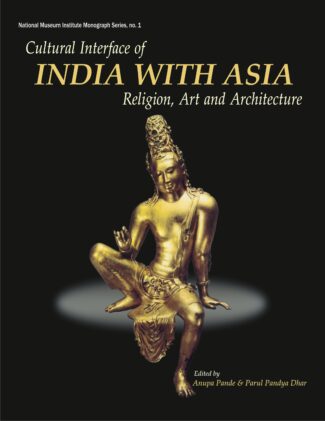
This collection of scholarly papers focuses on the centrality of the Indian contribution in defining the Asian cultural matrix and brings under one rubric the views of Indian as well as Eurasian experts on the subject.
The reality of the Indian presence in Asian cultures is undeniable. Recent scholarship in the field of Asian cultural studies has laid much stress on the essential oneness of the substratum that defines what may be termed as an Asian identity. Buddhism and Hinduism, having originated in India, travelled beyond the frontiers of the land of their origin, and in many ways, moulded the beliefs and faith of the people of Asia. Trade, political ambitions, and religious pursuits led to a dissemination of Indian ideas and forms across Asia. In each area of Indian influence, the assimilation of Indian traditions with indigenous practices led to the development of a new idiom of expression with a distinctive localized identity. This collection of scholarly papers focuses on the centrality of the Indian contribution to Asian cultures and brings under one rubric, the views of experts from India, Nepal, Tibet, Sri Lanka, Afghanistan, Cambodia, Thailand, Indonesia, Mongolia, China, Korea, Japan, Belgium, Bulgaria, and the United Kingdom. Such an international representation, the consequence of a Seminar held in the National Museum Institute in collaboration with the Indian Council for Cultural Relations, New Delhi, is unique not only in providing the Indian point of view but also in revealing Eurasian perspectives on the subject of Indias pivotal role in defining the Asian cultural matrix.
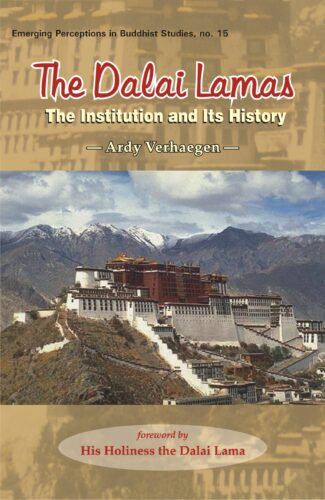
Richly annotated, this work is a deep study of the institution of the Dalai Lama: its rise to prominence, its working and its role within the socio-political structures of Tibet and Asia. All this is set against a historical narrative that brings out the unique religious culture and spiritual legacy of the land.
From the fifteenth century on, the Dalai Lamas emerged as the pre-eminent spiritual and secular leaders of Tibet. In his foreword to this book Tenzin Gyatso the Fourteenth Dalai Lama states that Buddhism, with its powerful central message of compassion . . . transformed Tibetans from the powerful warlike nation that dominated Central Asia in the seventh century to the more peaceful and religious people they are today. With Chinas continued occupation of Tibet threatening the very existence of a distinct Tibetan identity and culture the Dalai Lama feels it his primary responsibility to take whatever steps I must to save my people and their unique heritage from total annihilation. Author Ardy Verhaegen not only succinctly tells the story of each of the Dalai Lamas and their contribution as human beings to Tibets destiny, as the Dalai Lama points out, but also the historical narrative within which these eminent personalities played out their lives. Starting with the spread of Buddhism and its introduction into Tibet, Verhaegen chronicles the development of that countrys unique religious culture, the rise to prominence of the Dalai Lamas, and the role of the Dalai Lama institution within the social-political structures of Tibet and Asia. Descriptions of the workings of the institution itself and the current struggles of Tibetan culture to survive outside its historical borders round out this volume. Richly annotated, this introduction to the institution of the Dalai Lama is of value to both serious students of Tibetan history and culture and all those interested in one of the more fascinating stories of our times. The perilous flight of the Dalai Lama into exile and the subsequent success of the Tibetan diaspora community against tremendous odds are having profound implications for humanity at large. Ironically, while imperiled within Tibet itself, the spiritual legacy of the land of snows has spread through its incarnate lamas and teachers such that the principles of peace, compassion and individual enlightenment inherent in Tibetan Buddhist culture and embodied in the Dalai Lama now enjoy favour worldwide. The awarding of the 1989 Nobel Peace Prize to the Dalai Lama is indicative of this esteem, not only towards His Holiness but also the institution he represents.
Deviant Sex and Buddhism discusses deviant sexual practices recorded in Pali Sutta and Vinaya texts categorizing into normal, pathological and sociological. In Buddhist spirituality and philosophy, like in other religions, sex within the institution of marriage is admissible, while all other forms of sexual practices are immoral and denounced. A sexual act violating the norms of chastity and celibacy within the Buddhist community comes to be identified as a deviant sexual act.
At the backdrop this positioning, this volume engages one in a deep study of what were sensuality and sexuality in early Buddhism, Buddhist attitude to human body, and the definition of celibacy, chastity and normal deviant sexual behaviour along with the nuances of the other two forms of deviant sexual behaviour, i.e. pathological and sociological. Going by the Buddhist philosophy, any deviant sexual behaviour is connected with the issue of human suffering. Twofold sexual conformity – complete sexual abstinence and sex only with one’s own spouse – is emphasized while decrying all non-conforming sexual practices and deciding on a range for sexual acts including homosexual relationship.
This scholarly work should invigorate the interests of many researchers and academicians to take up further studies and researches on the topic, which has not yet been exposed to the literary world at length.

This book is an anthology of seventeen cerebral articles from well-known Buddhist scholars associated with major universities across the globe deliberating many a topic associated with Buddhist religion and its philosophies as part of our constant striving to understand the fundamental nature of what the Buddha wanted us to realize.
There have been serious attempts to understand the Buddha and his teachings since the inception of Buddhism some 2,600 years ago. All through the history of Buddhism, scholars were constantly striving to understand the fundamental nature of what the Buddha wanted us to realize. This book is an anthology of seventeen cerebral articles from well-known Buddhist scholars associated with major universities across the globe. In four parts – Meditation; Personality and Position; Dharmakirti and Persons; and Principles, History and Grammar – it highlights some pertinent topics associated with Buddhism and its legacy.
Part I discusses the diverse dimensions of meditation, dedicating itself to the kiriya (action) aspects of Buddhism. Part II is an attempt to delineate and study the major branches of Buddhism. Part III deliberates on the contributions of Dharmakirti and Rahula Sankrtyayana to the Buddhist philosophy along with the concept manusa-panatipata and how the revelation of reality of human experience by analysis helps a person to achieve wisdom in the light of Majjhima Nikaya Anathapindikovadasutta. Part IV has papers on different philosophical and applied concepts of Buddhism.
This volume thus should benefit one in understanding many an aspect of Buddhism vis-à-vis its enormous corpus of literature and teachings. It should highly benefit the students of Buddhism and for those who are keen to fathom deep into the myriad topics of Buddhist philosophy and teachings.
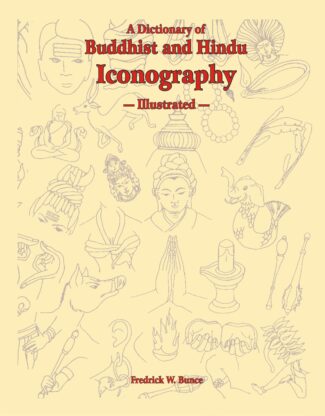
This Dictionary attempts to reveal the divine paradoxes of Buddhist-Hindu iconography by even interpreting the nuances of their iconic language. It explains, vividly, thousands of iconic representations (visual, conceptual symbols, images, objects, concepts, rites).
Man has, from times immemorial, exhibited a striking predilection for symbols. Which, through written words, drawings, sculptures or other visual/iconographic representations, seem to have shaped much of mankinds culture. From the simplest, yet eloquent, drawings on the walls of the prehistoric caves, through the sophistication of Egyptian imagery, the sculptural embroidered wealth of a Khajuraho, or the convoluted elegance of a Mannerist painting all interweave iconographic imagery so inextricably into their very core that, without its visual/didactic richness, these would be a mere shell, a hollow vanity! Veritably, our cultural scenograph will lose much of its aesthetic charm and meaning, once it is bereft of iconography. Over the centuries, Buddhisn and Hinduism (Brahmanical) have built up pantheon after pantheon, with a bewildering number of divinities, in varying forms and emanations and, significantly, with myriad iconographic attributes. Which, for both their definable precision and complex multi-interpretationality, not merely seem paradoxical, but may baffle even the specialists and the initiated as well. Here is just the Dictionary trying, for the first time, to help you see into the divine paradoxesof Buddhist-and-Hindu iconography and, simultaneously, interpret the very nuances of their iconic language. Painstakingly compiled by a distinguished scholar of Oriental/Buddhist Art, it is a Buddhist-and-Hindu Iconologia par excellence, spelling out vividly thousands of iconic representations, which these two of the worlds oldest, sustained faiths have left for all times to come. In its monumental effort to explain/interpret Buddhist-and-Hindu visual/conceptual symbols, images, objects, concepts and rites, the Dictionary extends the definition of iconography to embrace numerous peripheral/other terms, which either have immediate relevance to iconographic principles or are hard to dispense with in visualizing the true import of different icons. Dr. Bunces work has, at its base, his own first-hand observation of various temples in India, Nepal and several Southeast Asian countries; besides a number of authentic sources: both illustrated and verbal. Flawlessly illustrated: from cover to cover, it includes a compellingly readable introduction, an easy-to-understand Users Guide, extensive bibliographic references, and two well-planned lists to facilitate location of its each headword, each entry. Which all reinforce the Dictionarys indispensability to the specialists and the non-specialists who have often to grope for the essentials of Buddhist/Hindu iconographic complexities.

This dictionary provides meaning of Pali words in Sanskrit, Hindi and English. It will certainly prove useful to the learners of Pali language, students, scholars and researchers of Buddhist Studies, Pali Canons, and to those whose work is based on Pali.
As the teachings of the Buddha and the main Buddhist literature in original, as well as in translation, are contained mainly in Pali and Sanskrit languages, apart from Tibetan and Chinese as well, knowledge of Pali and Sanskrit is always essential to study the core of Buddhism — its basic teachings — and understand its basic concepts and perceptions. This voluminous edition has been offered in order to aid in the knowledge of the Pali and Sanskrit languages. Simple to comprehend and laying stress on clarity of meaning, the dictionary presents the Pali word at the beginning of each entry and gives its synonym in Sanskrit within bracket. It then proceeds to furnish the meaning of the word in both Hindi and English. The attempt is to make the dictionary useful to learners of the language and as a guide to those who are researching Buddhist works.
The book is meant to be a study companion to students and scholars of Buddhist Studies. It will be an indispensable aid to the readers and researchers of Pali Canons and works based on Pali and Sanskrit languages.
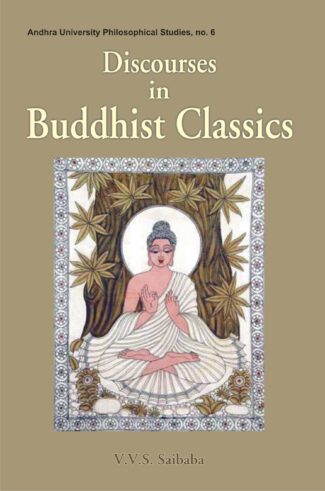
This work serves as a useful companion for the scholars and researchers who are seriously interested in the history of Buddhist literature; who wish to probe into Buddhist Textual Studies and who desire to have a lucid understanding of the philosophy of the two major Buddhist traditions of Theravada and Mahayana.
Discourses in Buddhist Classics is primarily designed with twofold objective viz., (a) to serve as the tool for post-graduate teaching of the Course in Philosophy of the Buddha; and (b) to sustain the interest of the enterprising student by providing comprehensive understanding of Theravada and Mahayana schools of Buddhism. Divided into six chapters, the first chapter gives an account of the missionary life and object of Buddha’s teachings from Pali and Sanskrit sources; the second surveys the evolution of Pali language and its significant contribution; the third and fourth provide a brief sketch of Pali Tripitakas, the salient features as well as the Philosophical doctrines of Theravada and Mahayana Buddhism by comparison and contrast. The last two chapters discuss the historiography of the two representative Buddhist Classics each from Thervada and Mahayana philosophical schools of Buddhism viz., Dhammapada, Sutta-Nipata, Vajracchedika Prajnaparamita and Saddharma Punóarika Sutra while throwing light on their central teachings. This work serves as a useful companion for the scholars and researchers who are seriously interested in the history of Buddhist literature; who wish to probe into Buddhist Textual Studies and who desire to have a lucid understanding of the philosophy of the two major Buddhist traditions of Theravada and Mahayana